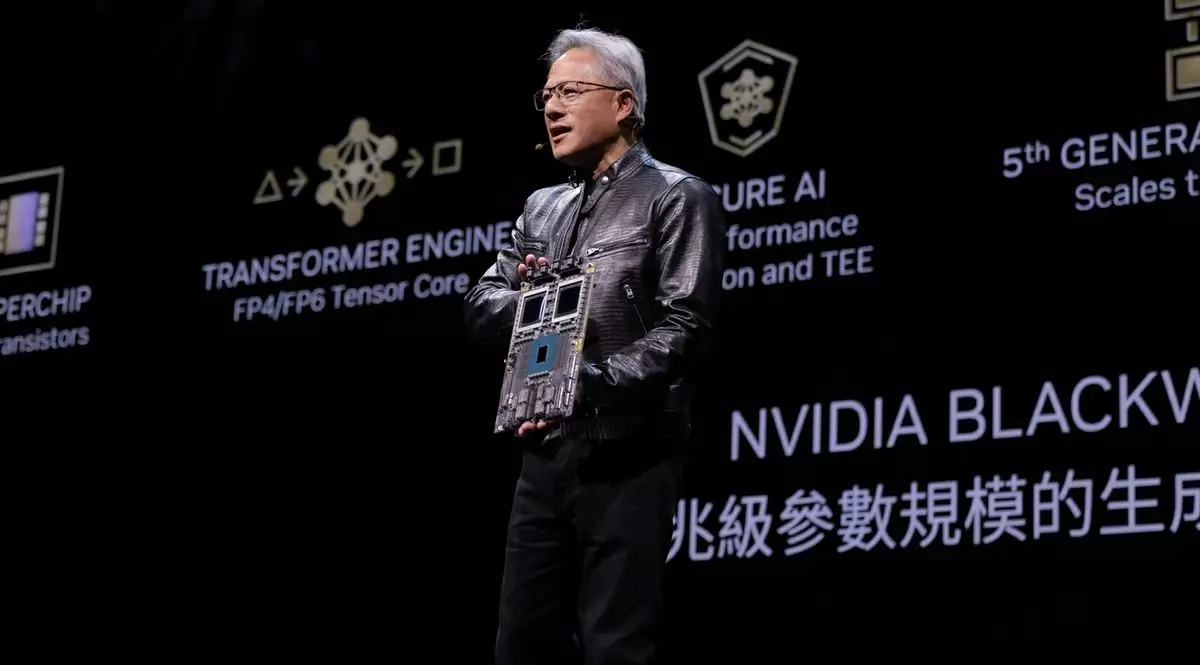In the fast-paced realm of technology, leadership often comes with a unique set of challenges, particularly when the company at the helm is a powerhouse like Nvidia. Jensen Huang, the CEO, recently shed light on these pressures during the Goldman Sachs Communacopia + Technology Conference. His remarks provide a fascinating glimpse into the emotional intensity that accompanies his role, especially as Nvidia navigates the bustling demands of the artificial intelligence (AI) hardware sector. The stakes are high, and the responsibilities are overwhelming; each technological advance and partnership carries with it significant implications for vast networks of businesses.
Huang’s admission that Nvidia collaborates with nearly every prominent AI company underscores the firm’s critical position within the tech ecosystem. With such widespread engagement, the expectation for timely delivery of innovative products and services intensifies. More than merely meeting deadlines, he noted, “delivery of our components… is really emotional for people,” highlighting that it directly impacts the profitability and competitiveness of their clients. Such an awareness illustrates that the tech industry is not just about hardware and software; it’s also about human emotions and business survival.
The Demand for Innovation
The current landscape for Nvidia’s AI GPUs, particularly the anticipated Blackwell series, is indicative of a tech frenzy. There’s been a staggering level of pre-orders even before the official unveiling of the new chips, reflecting a voracious demand for cutting-edge technology. Huang remarked on the competition: “Everybody wants to be first, everybody wants to be most,” emphasizing the almost insatiable hunger companies have for high-performance products that can help them maintain a competitive edge.
This backdrop creates a scenario where the pressure is not only external, coming from hungry customers and intense market competition, but also internal, as Nvidia’s team works tirelessly to meet those expectations. Huang’s portrayal of the situation conveys the relentless nature of innovation; it’s not just about creating technology but about doing so at a pace that matches the demands of a rapidly evolving industry.
Despite the stress associated with leading Nvidia amidst such turbulence, Huang appears to maintain a sense of enthusiasm about the future. His insights during the conference reflect a genuine passion for the breakthroughs currently underway in AI and robotics. “I think it’s fun to be inventing the next computer era,” he remarked, suggesting that the thrill of discovery can sometimes overshadow the emotional and physical toll of the workload.
However, the challenges are clear. The high-intensity environment Huang describes begs the question of how effective leadership can balance innovation and personal well-being. Surprisingly, he mentioned a rather alarming personal protocol regarding sleep, asserting that “three solid hours” is all he requires. This raises concerns about the long-term sustainability of such a lifestyle, as the demands of leadership should ideally complement a leader’s health and morale—not jeopardize it.
The juxtaposition of success and strain at Nvidia exemplifies the double-edged sword of being an industry leader. As the company effectively drives forward innovations that shape the technological landscape, Huang and his team must grapple with the complexities of overseeing such a transformative operation while ensuring that they can cope with the pressures that come along with it. This dynamic can create a formidable strategic headache for any leader, not just in the tech sector.
The sense of urgency that surrounds the launch of Blackwell AI GPUs, projected for release in Q4, continues to amplify the atmosphere of anticipation—both within Nvidia and amongst its clientele. The company’s vision for the future is undeniably compelling, yet a quiet whisper of caution lurks beneath the surface. As Huang takes the reins of this technological evolution, the hope remains that he can do so without sacrificing his well-being or that of the employees who contribute tirelessly to this vision.
The journey of driving innovation at Nvidia is paved with both celebration and contention, as Huang balances the price of leadership with the rewards of creating the next frontier in technology. It’s a narrative of excitement and trepidation—a testament to the complexities that define the future of AI.

